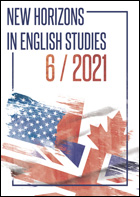Enhancing Productive Skills in Plurilingual Educational Settings through Metalinguistic Awareness and Instructional Dialogue
Enhancing Productive Skills in Plurilingual Educational Settings through Metalinguistic Awareness and Instructional Dialogue
Author(s): Begoña Lasa-AlvarezSubject(s): Language and Literature Studies, Foreign languages learning
Published by: Wydawnictwo Naukowe Uniwersytetu Marii Curie-Sklodowskiej
Keywords: language teaching; metalinguistic awareness; instructional dialogue; plurilingual educational settings;productive skills;
Summary/Abstract: In those educational settings where several languages coexist, strategies such as metalinguistic awareness and instructional dialogue can easily be implemented, in that students are immediately able to observe the similarities and differences between languages. The present article examines metalinguistic awareness and instructional dialogue in detail, through an analysis of the findings of a number of studies. Some specific teaching implications are then exposed for the development of both these strategies. The characteristics of plurilingual educational settings, in which languages can and should be taught in an integrative manner, are addressed, looking particularly at regions and communities in Spain where two co-official languages coexist with one or two foreign languages. The benefits of using the same text in various languages as a teaching and learning resource is then showcased, particularly when students are familiar with it, as we will see in the case of Mary Shelley’s Frankenstein. Finally, the practical implementation of metalinguistic awareness and instructional dialogue is encouraged, essentially to enhance students’ productive skills.In those educational settings where several languages coexist, strategies such as metalinguistic awareness and instructional dialogue can easily be implemented, in that students are immediately able to observe the similarities and differences between languages. The present article examines metalinguistic awareness and instructional dialogue in detail, through an analysis of the findings of a number of studies. Some specific teaching implications are then exposed for the development of both these strategies. The characteristics of plurilingual educational settings, in which languages can and should be taught in an integrative manner, are addressed, looking particularly at regions and communities in Spain where two co-official languages coexist with one or two foreign languages. The benefits of using the same text in various languages as a teaching and learning resource is then showcased, particularly when students are familiar with it, as we will see in the case of Mary Shelley’s Frankenstein. Finally, the practical implementation of metalinguistic awareness and instructional dialogue is encouraged, essentially to enhance students’ productive skills.
Journal: New Horizons in English Studies
- Issue Year: 6/2021
- Issue No: 1
- Page Range: 3-17
- Page Count: 15
- Language: English

